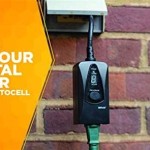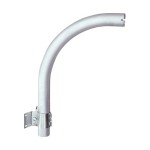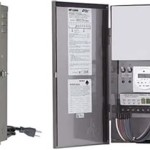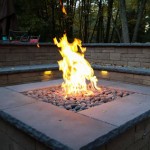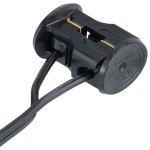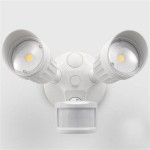How to Wire Up an Outdoor Socket
Adding an outdoor socket to your home can be a beneficial addition, providing a convenient power source for various tasks and appliances. Whether you want to power up lawn tools, Christmas lights, or outdoor entertainment systems, a properly wired outdoor socket is essential. This guide will walk you through the process of safely and effectively installing an outdoor socket, ensuring it meets electrical safety standards.
1. Gathering Materials and Tools
Before embarking on the wiring process, it is essential to gather all necessary materials and tools. Here's a comprehensive list:
-
Outdoor Rated Weatherproof Socket
: Choose a socket with a weatherproof cover and a ground fault circuit interrupter (GFCI) for added safety. -
Electrical Wire
: Use a weather-resistant cable rated for outdoor use, such as THHN or UF-B. The wire gauge should match the socket's amperage requirements. -
Junction Box
: Opt for a weatherproof junction box specifically designed for outdoor applications. -
Wire Connectors
: Use wire connectors suitable for the type of wire you're using, ensuring they are rated for outdoor use. -
Electrical Tape
: Ensure the electrical tape is rated for outdoor applications to prevent moisture damage. -
Wire Stripping Tool
: This helps in safely removing insulation from the wire ends. -
Voltage Tester
: A voltage tester is crucial for verifying the absence of power during installation. -
Screwdrivers
: Use appropriate screwdrivers for securing the socket and junction box. -
Drill and Drill Bits
: Used for drilling pilot holes for mounting the socket and junction box. -
Level
: Ensures the socket is installed level and flush with the wall. -
Safety Glasses and Gloves
: Always wear safety glasses and gloves for protection during installation.
2. Planning and Preparing the Installation Site
Before starting the installation, proper planning is crucial. This involves determining the location of the socket, considering its accessibility and the proximity to an existing power source.
1.
Choose a Location:
Select a location that is convenient, accessible, and protected from the elements. Ideally, the socket should be placed at least 6 feet above the ground and away from any water sources or sprinklers. 2.Check for Existing Wiring:
Identify the nearest electrical outlet or circuit breaker that will serve as the power source for the outdoor socket. 3.Turn Off Power:
Before working with electricity, always turn off the power at the circuit breaker controlling the designated circuit. 4.Prepare Installation Area:
Clear the installation area of any obstacles, debris, or vegetation. Securely anchor the socket to the wall using appropriate mounting hardware.3. Wiring the Outdoor Socket
Following the above steps, it's time to proceed with the actual wiring process. Here's a detailed guide:
1.
Run Electrical Wire:
From the existing power source, run the electrical wire to the desired location of the junction box and the outdoor socket. Choose a path that minimizes exposure to weather and potential damage. 2.Connect Wires in Junction Box:
Carefully open the junction box and connect the wires. Strip the insulation off the ends of the wires using a wire stripping tool. Connect the black wire (hot) to the black wire of the new circuit, the white wire (neutral) to the white wire, and the green wire (ground) to the green wire. Secure the connections using wire connectors. 3.Connect Wires to the Socket:
Repeat the wire connection process with the outdoor socket. Connect the black wire (hot) to the black terminal, white wire (neutral) to the white terminal, and green wire (ground) to the green terminal. 4.Inspect Connections:
Properly secure all connections, ensuring that each wire is securely fastened. Double-check that there is no exposed wire or loose connections. Use electrical tape to insulate any exposed wires within the junction box and at the socket. 5.Test the Installation:
Before applying power, carefully inspect all connections and wiring. Use a voltage tester to confirm that there's no power reaching the socket. 6.Apply Power:
Turn the breaker back on and test the outdoor socket by plugging in a device. Ensure the socket is working properly and that there are no signs of overheating or sparks.
How Do You Install The Mk Marsterseal Plus Outdoor Sockets

Installing An Outdoor Socket Or Exterior Power Point Diy Doctor

How Do You Install The Mk Marsterseal Plus Outdoor Sockets

How To Install An Outside Socket External Plug Installation Guide

How To Install The Easiest Outdoor Socket
Technical Data

How To Install A Plug Socket Socketsandswitches Com

Simple Radial Circuit

Inside The Socket Wall Sockets Usb Outdoor Explained

How To Swap A Socket Homebuilding
Related Posts

